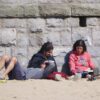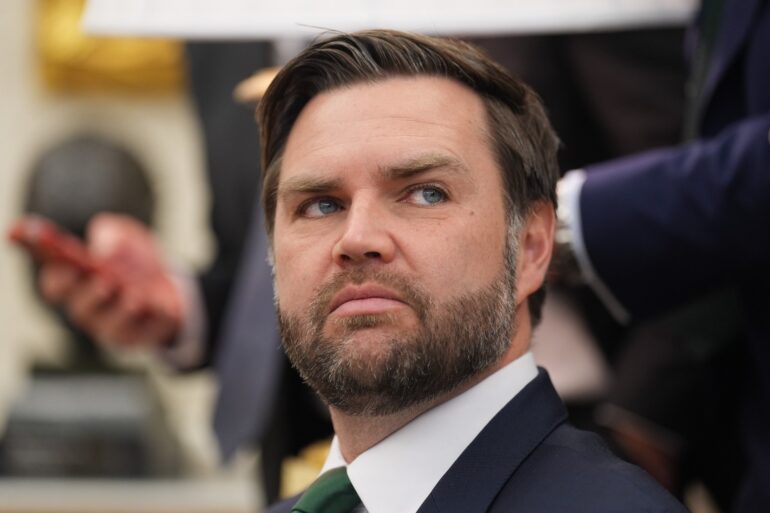-
 play_arrow
play_arrow
Kl 1 Radio Local radio for west Norfolk
-
 play_arrow
play_arrow
KL DISCO KL Disco Playing Disco Music from the 70's onwards.24/7
-
 play_arrow
play_arrow
KL COUNTRY KL COUNTRY Playing New and Classic Country Music 24/7
-
 play_arrow
play_arrow
KL ROX KL ROX The best of New and Classic Rock.24/7
-
 play_arrow
play_arrow
KL SUMMER Summer Vibes 24/7 from KL1 Radio across West Norfolk
-
 play_arrow
play_arrow
KL CLASSICAL Your Symphony Starts Here
-
 play_arrow
play_arrow
KL CHILL Just Chill!
-
 play_arrow
play_arrow
KL POP The Best POP Hits all day Long!
-
 play_arrow
play_arrow
KL XTRA KL XTRA
music_note

Israeli air strikes have pounded areas across Lebanon, killing at least 25 people, officials said.
The deaths include more than a dozen people in a southern town where Israeli bombardments in previous conflicts are seared into local memory.
Elsewhere in the south, a city’s mayor was among the dead in a strike that Lebanese officials said targeted a meeting co-ordinating relief efforts.
The Israeli military said they were targeting a Hezbollah commander in the strikes late Tuesday on the southern town of Qana, where 15 people were killed.
Associated Press photos and video of the scene showed several flattened buildings and others with their top floors collapsed.
Rescue workers carried away the remains of dead people and used a bulldozer to remove rubble, as they searched for more victims.
Israel said the target was Jalal Mustafa Hariri, Hezbollah’s commander in charge of the Qana area.
In 1996, Israeli artillery shelling on a United Nations compound housing hundreds of displaced people in Qana killed at least 100 civilians and wounded scores more people, including four UN peacekeepers.
During the 2006 war, an Israeli strike on a residential building killed nearly three dozen people, a third of them children. Israel said at the time that it struck a Hezbollah rocket launcher behind the building.
“Qana always gets its share,” said mayor Mohammed Krasht, referring to the town’s grim history.
Lebanon’s caretaker prime minister, Najib Mikati, meanwhile accused Israel of “intentionally targeting” a municipal council meeting to discuss relief efforts in Nabatiyeh, where six people were killed.
“What solution can be hoped for in light of this reality?” he asked in a statement.
Strikes continued across Lebanon, including in the eastern Bekaa Valley and Nabatiyeh, in southern Lebanon, where the Israeli military said it targeted Hezbollah command centres and weapons facilities that had been embedded in civilian areas.
Hezbollah launched more than 90 projectiles towards Israel on Wednesday, wounding four civilians, according to Israel Rescue Services.
Israel also resumed its barrage on Beirut’s southern suburbs after a six-day pause, hitting what it said was an arms warehouse under an apartment building, without providing evidence. The military warned residents to evacuate before the strike, and there were no reports of casualties.
During an assessment of the situation in Israel’s north on Wednesday, Israel defence minister Yoav Gallant said Israel was gleaning intelligence from their capture of Hezbollah militants that was significantly weakening Hezbollah’s ability to launch attacks.
“We will conduct negotiations under fire, I said that on the first day, I said it in Gaza, I said it here – this is our tool,” he told soldiers operating in southern Lebanon.
The strikes on southern Beirut came after Mr Mikati said the United States had given him assurances that Israel would curb its strikes on the capital.
Hezbollah has a strong presence in southern Beirut, known as the Dahiyeh, which is also a residential and commercial area home to large numbers of civilians and people unaffiliated with the militant group.
The Israeli military posted an evacuation warning on social media platform X ahead of the strike in Beirut. An Associated Press photographer saw three air strikes in the area, the first coming less than an hour after the notice.
In Nabatiyeh, more than half a dozen strikes hit the city and surrounding areas, according to Lebanon’s Health Ministry, which said at least six people were killed and 43 wounded, with rescue efforts still under way.
The city’s mayor, Ahmad Kahil, was among those killed, provincial governor Huwaida Turk told AP.
In his statement about Nabatiyeh, Mr Mikati said the international community has been “deliberately silent” about Israeli strikes that have killed civilians.
UN special co-ordinator for Lebanon Jeanine Hennis-Plasschaert called reports of Mr Kahlil’s death “alarming”.
“This attack follows other incidents in which civilians and civilian infrastructure have been targeted across Lebanon,” she said.
Hezbollah began firing rockets into Israel on October 8 2023, in solidarity with the Palestinian militant group Hamas, following the surprise Hamas attack on southern Israel that triggered the war in Gaza.
A year of low-level fighting along the Israel-Lebanon border escalated into all-out war last month, and Israel invaded Lebanon at the start of October.
Israeli air strikes have killed Hezbollah leader Hassan Nasrallah and most of his senior commanders, and Israel has vowed to continue its offensive until its citizens can safely return to communities near the border.
Some 2,300 people have been killed by Israeli strikes in Lebanon since last October, more than three quarters of them in the past month, according to Lebanon’s Health Ministry. The fighting has displaced some 1.2 million people in Lebanon.
Hezbollah’s rocket attacks, which have extended their range and grown more intense over the past month, have driven around 60,000 Israelis from their homes in the north. The attacks have killed nearly 60 people in Israel, around half of them soldiers.
Hezbollah has said it will keep up its attacks until there is a ceasefire in Gaza, but that appears increasingly remote after months of negotiations brokered by the United States, Egypt and Qatar grounded to a halt.
Israel is still at war in Gaza more than a year after Hamas’s attack, in which some 1,200 people were killed, mostly civilians, and another 250 were abducted. Around 100 captives are still being held, about a third of whom are believed to be dead.
Israel has been carrying out a major operation for more than a week in Jabaliya, an urban refugee camp in the territory’s north dating back to the 1948 war surrounding Israel’s creation. Israeli forces have repeatedly returned to Jabaliya and other areas after saying that Hamas militants had regrouped.
Hospitals have received around 350 bodies since the offensive began on October 6, according to Dr Mounir al-Boursh, the director-general of Gaza’s Health Ministry.
He told AP that more than half the dead were women and children, and that many bodies remain in the streets and under the rubble, with rescue teams unable to reach them because of Israeli strikes.
“Entire families have disappeared,” he said.
Israel’s offensive has killed more than 42,000 people, according to the Health Ministry, which does not say how many were fighters but says more than half were women and children.
The offensive has left large areas in ruins and displaced around 90% of Gaza’s population of 2.3 million people, forcing hundreds of thousands into crowded tent camps.
Published: by Radio NewsHub

Similar posts
Upcoming shows

Jonathan Charles – Vinyl Countdown
10:00 pm - 11:00 pm

Night Trax
12:00 am - 7:00 am

Paul Baker – KL1 Breakfast
7:00 am - 10:00 am

Chris Fisher – KL1 Mornings
10:00 am - 1:00 pm

Ian Campfield – KL1 Afternoons
1:00 pm - 4:00 pm
-

US vice president JD Vance meets Pope Francis on Easter Sunday

Arsenal crush 10 man Ipswich to delay Liverpools Premier League title party

A dry and pleasant Easter Sunday for much of the UK will be followed by rain

Husband watched in horror as van killed wife on golf course after police chase

The Childrens Commissioner says parents should stop trying to be their childs friend over phone usage
Message Us
Copyright The Mediasite UK - 2025



